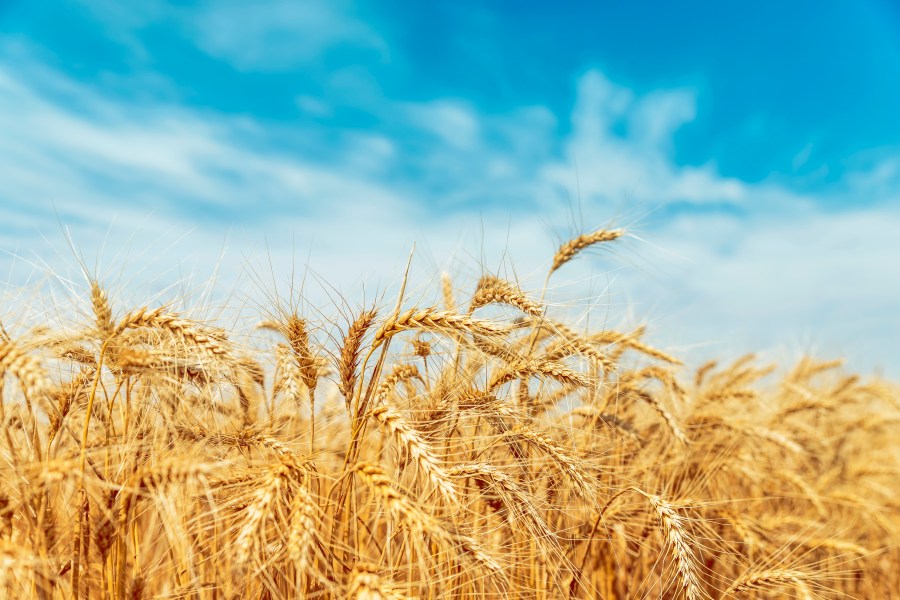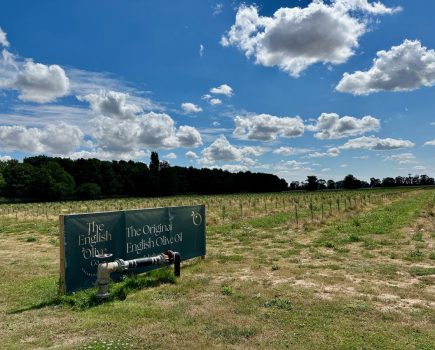Although the UK doesn’t import much wheat, its prices are influenced by global markets all the same. CPM examines why understanding Black Sea wheat production is so important and how this information can be used to make informed marketing decisions.
“Rather than being cheap wheat, it’s competitively priced.” MIKE LEE
By Melanie Jenkins
The Black Sea may have become synonymous with the war between Ukraine and Russia, but for any grower wishing to market their grain it’s important to never lose sight of its significance as a huge exporter of wheat, and to an extent, maize.
That’s according to Green Square Agro Consulting’s Mike Lee, who says Russia is the number one exporter of wheat in the world, while Ukraine is sixth. “To put this in perspective, Moldova, a little talked about and poor post-Soviet country is twelfth and the UK is twentieth, which is why UK prices are at the mercy of wheat exports from the Black Sea.”
However, it goes without saying that there’s much geopolitical upheaval in the area at the moment, he notes. “But even before the war there was a lot of misunderstand about Black Sea grain production and its impact domestically.”
Mike has made a career from putting boots on the ground in Ukraine and Russia so that crops can be assessed accurately to produce yield forecasts, providing markets with real-time information to allow growers and traders to make informed decisions when buying and selling.
“There’s a fairly widespread and inaccurate belief that Ukrainian and Russian farmers are backwards, which leads to the assumption that the wheat originating from these areas is ‘cheap’,” he comments.
“But the reality is that what they’re producing is as good as what we grow in the UK, so rather than being cheap wheat, it’s competitively priced. If you were to stand in one of their fields now you’d be forgiven for mistaking the location for Lincolnshire or Cambridgeshire – they’re producing high quality crops, and this is only going to continue.”
He highlights that reframing Black Sea wheat as a competitive product is the first step to better understanding the grain markets and subsequently how this information can be used when managing UK farm businesses.
“The capability of Ukrainian and Russian farmers is constantly increasing, as are their yields, which ties into their competitiveness with UK farmers,” explains Mike. “Their inputs may be similarly priced to in the UK, but the cost of overheads such as land and machinery are significantly lower, so immediately there’s a competitive advantage.
“Top arable land can sell for well over £20,000/ha here but in Ukraine a long-term lease can be sourced for as little as £1000/ha, which means you’re dealing with an uneven playing field from the start.”
Wheat production out of the Black Sea has also been increasing steadily for the past 10-15 years, observes Mike. “There’s been an increase in area and yields per hectare, with Ukraine almost doubling its average yield from 2t/ha to around 4t/ha. I understand this might not seem much compared with the UK average of 8t/ha, but when you consider Ukrainian farmers are achieving this with minimal inputs, you can’t compare the two.”
And in the UK, farmers are pushing to make every hectare produce more because of the combined cost of land, machinery, seed, fertiliser, sprays, labour and more, he says. “We’re in a position where we have to squeeze as much out of our area as possible. In contrast, Ukraine and Russia don’t have this pressure. Although science suggests we could achieve 20t/ha, we seem to have plateaued and are limited by our agronomic understanding.”
Ukraine, by and large, has a fairly uniform geography and environment while Russia consists of several different grain producing zones, explains Mike. “There’s a lot of winter wheat produced in the southern and central areas, but the south if often hot and yields vary while the centre has a more stable climate and yield output.
“In the east on the other hand, more spring wheat is produced and this area is quite volatile. Despite the variations across the grain regions of Russia, it tends to even out each season with one area performing well while another has lower yields, which in essence helps to limit Russia’s overall production.”
But what Russia has that the UK doesn’t have, is more land, he reminds. “Russia still has a lot of land that can be expanded into for arable production. To give this context, during the past 10 years Russia has increased its wheat growing area by around 3M hectares.
“So although Ukraine’s wheat production has fallen from 30M tonnes to 20M tonnes during the war, the overall wheat production out of the Black Sea has remained the same, with Russia’s output balancing the sheet.”
And while Ukraine doesn’t have swathes of unfarmed land to expand into, it still has scope to significantly increase yields, believes Mike. “So there’s a lot of low-hanging fruit for both countries to improve productivity, and I think in the medium-to-long term, we’ll see more competitively priced Black Sea wheat entering the market.”
For a period at the start of the war, exports out of the Black Sea were hindered but this is no longer the case with both counties exporting recording volumes during the past year, he adds.
But unlike the UK, Ukraine doesn’t benefit from a Recommended List, instead there are around 100 varieties for use via plant breeders’ catalogues. “And although this seems like a lot of options, more doesn’t necessarily mean better. In addition, when buying grain from Ukraine, it’s harder to know what variety is being purchased because the system isn’t as transparent as in the UK.”
And because UK growers don’t have the scope to expand or increase yields in the way Black Sea farmers can, drilling into costs may be the best approach to improve margins and increase competitiveness, he says. “This is easier said than done and the approach will depend on the individual business.
“Previously I ran farms in Ukraine, and we’d have private investors promise money to the business. We’d set up the business based on this investment and then only half the money would arrive, which really focuses the mind because you’re running your business with no money. It helped us to drill down into the essentials and to only purchase what was absolutely necessary.
“What really struck me upon my return to the UK was the volume of expensive tractors on farms, and although these may be the most cost-effective machine for some farmers, in other cases a more affordable model could do the same job. It could be a case of compromise because any decision may impact your efficiency or yield.”
Mike also suggests farming the land with the resources and value available. “If you’re continuing to chase yield and are still losing money, then it might be time to evaluate alternative options.
“On a wider scale, what UK farmers require is a government policy and social mechanisms that support them. It all goes hand-in-hand with the inheritance tax issue, whereby the price of land has been decoupled from the ability to produce a crop on it.”
So why does real-time monitoring of crops thousands of miles away matter? Despite the swathe of remote monitoring equipment at the disposal of the markets, he points out that an in-person visual assessment of a crop often tells a different story.
However, the war has hindered the firm’s ability to visit many of the key locations it would have travelled to before. “Prior to the war, we’d have visited Ukraine and Russia as many as six times per year, travelling through areas where issues with grain had been reported on remotely. My approach has been to go there in person to be able to say with certainty the state of the crops.”
Mike says he often found that remote sensing data from satellites would almost always report crops to be in a worse state than they actually were. “We’d arrive in these regions to find there was nothing wrong with the crops at all, so it’s very frustrating to not be able to carry out in-person visits at the moment.”
The reason first-person data is so valuable isn’t just because of the lack of reliable remote data, but also because of the vested interest of those buying and selling grain, he points out. “As soon as there’s two weeks of dry weather, there’ll be those reporting that crops are dying; trade is constantly fluctuating on the current weather. So by providing a transparent first-hand view of crop status, this helps to bypass the market panic, as well as the lack of reliable information that can come out of the region.”
He also highlights that because of the longer, colder winter conditions experienced in the Black Sea, it takes an informed eye to be able to accurately evaluate a crop. “What looks good can be subjective to a particular area, so this has to be contextualised.”
At present, the firm is using both remote data and backing this up with anecdotal data from local sources with boots on the ground. “For the coming harvest, the yield potential out of the Black Sea looks positive, which could put pressure on UK prices.”
Although the UK doesn’t import much wheat, any wheat exported onto the world market from the Black Sea impacts the global price which concertinas back to what price UK farmers can command, explains Mike. “Understanding the competition is the first step to preparing your own business.
“If you were to plot the average price of UK wheat against the wheat yields coming out of the Black Sea, you’d see there’s a correlation between increasing yields and decreasing UK price,” he says. “But remember, this works both ways. So following Black Sea wheat potential can provide you with an indication of what the home markets are likely to do in the coming year.”
Combines usually start to roll in Ukraine and Russia between the middle and end of July, and as soon as they’re in the field, this will give a good indication of what the real yield potential out of the Black Sea will be, adds Mike.
So how can UK growers access this information? Firms like Mike’s are one option and as soon as the war ends, he stresses he’ll have boots back on the ground in both Russia and Ukraine. “If you have little experience of understanding grain markets first-hand, coming in cold can be quite overwhelming but it’s a lot simpler than it may seem.
“There’s plenty of remote information available and you can make a good assessment based on that. For instance, AHDB publishes a regular market update that’s usually only a page long, so you can read those for an overview.
“Social media can also be a great tool for keeping up to date with grain analysts and even befriending locals who you can engage with for insights on a regular basis,” he advises. “It can be a great way of connecting with other farmers and can provide real value.”
He concludes by stating knowledge is power. “But if you’re making decisions without knowledge then you’re rolling the dice. And while monitoring the market won’t give you a definitive answer, it’ll help you make the least worst choice.
“Plus, knowing the market well means you’re likely to become more adept at picking up on long-term trends – black swan events like the war aside – and alongside your yield forecasts can help you to determine your range of return.”
This article was taken from the latest issue of CPM. Read the article in full here.
For more articles like this, subscribe here.
Sign up for Crop Production Magazine’s FREE e-newsletter here.




